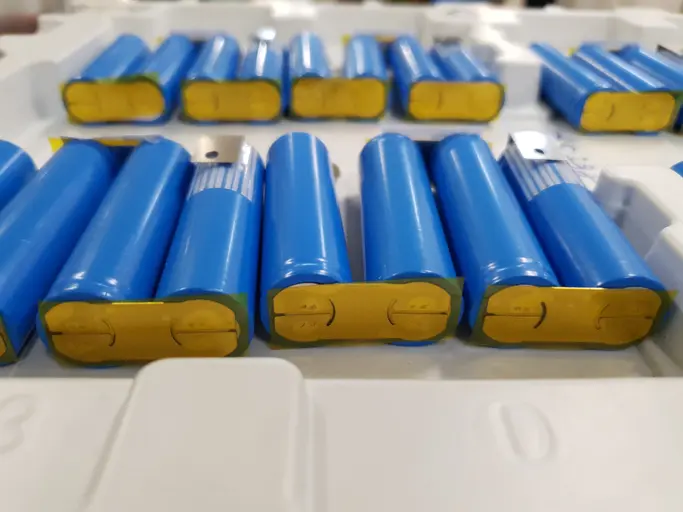Research on manufacturing material of negative electrode As an important...
technical parameters of lithium iron phosphate battery pack
Lithium iron phosphate battery pack (LiFePO4, LFP) has been widely concerned and applied because of its superior safety and long life, especially in electric vehicles and energy storage systems. The following are the key technical parameters of the lithium iron phosphate battery pack.
The rated voltage of lithium iron phosphate battery is generally 3.2V to 3.3V. The total voltage of the battery pack is determined by the number of individual cells, and common battery pack voltages such as 48V, 72V, etc., are used to adapt to different electric vehicle and energy storage system requirements.
The cell capacity is usually expressed in ampere hours (Ah), and the single capacity of the common lithium iron phosphate battery ranges from 10Ah to 300Ah. The total capacity of the battery pack depends on the combination of cells in series and parallel to meet the energy requirements of different applications.
The cycle life of lithium iron phosphate batteries can usually reach more than 2000 times, and even up to 5000 times in some conditions. This property makes LFP batteries particularly suitable for applications that require frequent charging and discharging, such as electric vehicles and energy storage systems.
Rated energy (Wh) is the product of battery capacity and voltage. For example, a battery with a capacity of 100Ah and a rated voltage of 3.2V will have a rated energy of 320Wh. This parameter directly affects the total energy output of the battery pack.
The energy density of lithium iron phosphate batteries is generally 90-160 Wh/kg, which is slightly lower than that of other lithium battery types (such as ternary lithium batteries). Despite this, its security and stability are still favored by users.
The internal resistance of the battery usually affects the charging and discharging efficiency and heat, and the internal resistance of the lithium iron phosphate battery is generally between 10-30 milliohm (mΩ). The lower internal resistance helps to improve the discharge performance of the battery, especially when discharging at high rate.
The State of Charge (SOC) of a battery is a measure of the current state of the battery, usually expressed as a percentage (%). The SOC can be monitored in real time by the battery Management System (BMS) to help users understand the remaining energy of the battery.
The charge and discharge rate, in C, represents the rate at which the battery is charged and discharged. For example, the charge and discharge rate of 1C refers to the battery being fully charged and discharged within 1 hour. Lithium iron phosphate battery packs usually support a charge and discharge ratio of 1-3C, and some high-performance batteries can reach 10C at instantaneous discharge.
The Depth of Discharge (DOD) indicates the degree of discharge of the battery, usually expressed as a percentage. For example, a DOD of 80% represents the state of the battery when it is discharged to 20% of its remaining capacity. Lithium iron phosphate batteries support deep DOD and can generally safely discharge up to 80%-90%, helping to improve energy utilization.
The operating temperature range of lithium iron phosphate batteries is usually -20°C to 60°C. Battery performance may degrade in extreme environments, but many manufacturers design with this in mind to guarantee battery reliability at a variety of temperatures.
Lithium iron phosphate batteries usually have a high level of safety protection, and some battery packs can reach IP54 or higher, and have good dust and water resistance. This protective design can not only extend the life of the battery, but also provide additional security for the user.
Lithium iron phosphate battery pack is usually equipped with battery Management System (BMS), through CAN, RS485 and other communication methods to exchange data with external equipment. This communication method can monitor the state of the battery in real time, including voltage, temperature, SOC and other parameters, to ensure the safe and reliable operation of the battery.
Conclusion
Lithium iron phosphate battery pack is widely used in many fields such as electric vehicle and energy storage system because of its high safety, long cycle life and good performance parameters. The technical parameters introduced in this paper provide an important reference for users in the selection and use of lithium iron phosphate battery pack, help to make more appropriate decisions, give full play to the advantages of lithium iron phosphate battery.

Home energy storage product series
A lithium battery pack for home energy storage systems, which is compatible with solar panels and the sun The inverter can work together with the power grid to power household appliances, and it can also be used as a For off grid systems.
Extended reading
THE ESSC Brand promise
Global supply
Our products sell well all over the world, covering many countries and regions, through the global logistics network, to provide customers with convenient purchasing experience.
Rigorous quality
We adhere to the highest quality control standards to ensure every product meets industry regulations and customer expectations, earning trust through consistent excellence.
Excellent service
With a customer-centric approach, we provide prompt responses, professional support, and personalized services, aiming to deliver the best user experience and long-term value.


